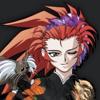Object Oriented Game Design
Robert Martin has a lucid article based on his experience teaching OO and one exercise there, it's about building a CoffeMaker as trivial as the example seems if you read the article you'll see that the usual solution inexperienced designers come up with very closly resembles what have drawn up in this thread, he then goes to remedy the whole situation somewhat and arrive at a cleaner sounder design.
BUFD is out XP is in ;)
I want to help design a "sandpark" MMO. Optional interactive story with quests and deeply characterized NPCs, plus sandbox elements like player-craftable housing and lots of other crafting. If you are starting a design of this type, please PM me. I also love pet-breeding games.
In time the project grows, the ignorance of its devs it shows, with many a convoluted function, it plunges into deep compunction, the price of failure is high, Washu's mirth is nigh.
I want to help design a "sandpark" MMO. Optional interactive story with quests and deeply characterized NPCs, plus sandbox elements like player-craftable housing and lots of other crafting. If you are starting a design of this type, please PM me. I also love pet-breeding games.
Quote:
Original post by sunandshadow
*blink* Um, but aren't objects supposed to contain functions and data, while databases are not supposed to contain functions, only data?
You could represent a database as an object whose functions represent the operations you could preform on it (like selecting an element, adding an element, etc).
For the matrix, something like "NPC_Manager::CheckFirstToSecond(int firstNpcID, int secondNpcID)"?
Quote:
Original post by sunandshadow
*blink* Um, but aren't objects supposed to contain functions and data, while databases are not supposed to contain functions, only data?
Not at all, if you think of a SQL database, then yes. But a "database" is not nearly so limited as to exclude functionality. In fact, ORDBS are a common form of database that integrate the ideas of an object, and the ideas of using relational storage idioms. The objects are not just serialized types, but actual functioning objects with methods you can query. A filesystem could be considered both an object, and a database. It has functionality for creation and manipulation, at the same time it stores data about the things in it.
A graph of objects, stored in memory, is a database. It's not your usual relational database, but a database none the less. Having a means of querying said database is important. Equally as important is the ability to have the queries be fairly dynamic, hence the use of the Interpreter pattern. The Interpreter pattern allows you to expose a series of objects that give you the ability to query for certain conditions, attributes, nodes, and other features of your graph. You can then combine these objects in a variety of ways for form your ultimate query. In case you haven't read up on it, it's basically building a tree of execution.
Example:
Query findLongDeadMonsters = new AndQuery(new IsFalseQuery(new delegate{return monster.IsAlive; }), new IsTrueQuery(new delegate{return monster.DeathTime > 5; }));//laterList<GameObject> longDeadMonsters = findLongDeadMonsters.Execute(gameObjects);In time the project grows, the ignorance of its devs it shows, with many a convoluted function, it plunges into deep compunction, the price of failure is high, Washu's mirth is nigh.

Color Key:
Anything orangey is a menu. Anything green has to do with objects in the gameworld. Hopefully the rest is self-explanatory. [wink]
Feedback please?
I want to help design a "sandpark" MMO. Optional interactive story with quests and deeply characterized NPCs, plus sandbox elements like player-craftable housing and lots of other crafting. If you are starting a design of this type, please PM me. I also love pet-breeding games.
For your question about OO, you can use OO for NPCs relations interactions in the following sense: (if you try to do it completely OO)
Each RNPC contains a list of cProfile objects, each cProfile object contains all the data that RNPC A knows about RNPC B. For example, if character A knows B, C, and D, then, under character A's cProfile list there will be three cProfile objects for B, C, and D.
Functions are encapsulated in the sense that if you put A and B together for a 'generic romatic dinner with meal course X', then, under cProfile, there is a function called like this:
cProfile::GenericRomaticDinnerMealCourseX(cProfile* npcXY, cProfile* npcYX)
This is a class function that deals with all the profile simulation and changes during the course of the romatic dinner, where npcXY is npc X's profile of Y, and npcYX is npc Y's profile of X.
Suppose there are more than one meal plans, and you want to OO it. Then your class function may look like this:
cProfile::RomaticDinnerTemplate(cProfile* npcXY, cProfile* npcYX, cMealPlan* m)
And this function handles all the relationship changes between X and Y due to a dinner together with mealplan m.
A more generic class function maybe probably like this:
cPresent::Meeting_XY(cEvent* e, cCharacter* x, cCharacter* y)
where cEvent contains data specifying what kind of event it is, (dinner is a type of event, duel is another type). Within the code of Meeting_XY, there will be function calls to various dialogues and cutscene class functions. For example, the meeting may begin with a call to
cCutscene::EventSpecificGreetings(cEvent* e, cCharacter* x, cCharacter* y)
It is a function that generates a cutscene object where x and y are greeting each other for event e.
You can contruct a class tree by listing all the data that can be grouped and be changed. For every arguement for a function that has a template, there is a class. It is unclear what your arrows mean. In general arrows indicate inheriance or containment. They don't form cycles.
[Edited by - Estok on August 26, 2005 2:34:08 AM]







